U.S. Lost the Moon Because of Sanctioning China
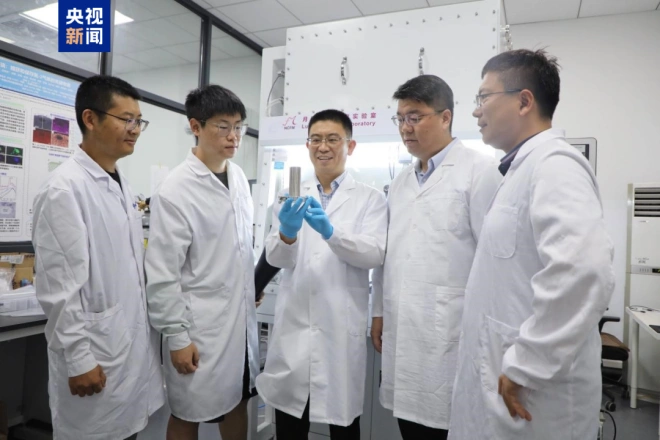 Dr. Wang Junqiang is featured in the center of this group photo.
Dr. Wang Junqiang is featured in the center of this group photo.
On November 1, Chinese scientist Wang Junqiang(王军强) from the Ningbo Institute of Technology, Chinese Academy of Sciences, reported that the U.S. has once again requested samples of lunar soil from China, but this request has been “not approved” once more. The obstacle preventing U.S. access to these samples is a U.S. law enacted 13 years ago that imposed sanctions on China.
As noted by SpaceNews.com, the U.S. efforts to study China’s lunar soil began with an internal email in late 2023, which highlighted the “unique value” of the Chinese lunar samples, according to the Chinese media outlet Guancha.
So, what makes China’s lunar soil so “unique”?
The first batch of lunar soil was collected by the Chang’e 5 spacecraft in 2020 from an area of the moon that had never been visited by humans, making it exceptionally valuable for scientific research. For instance, during Putin’s visit to Beijing in 2022, 1.5 grams of this lunar soil was provided to Russia as a research sample. In October of this year, Russian scientists discovered two unique crystals within the sample, indicating geological activity on the moon that had never been observed before.
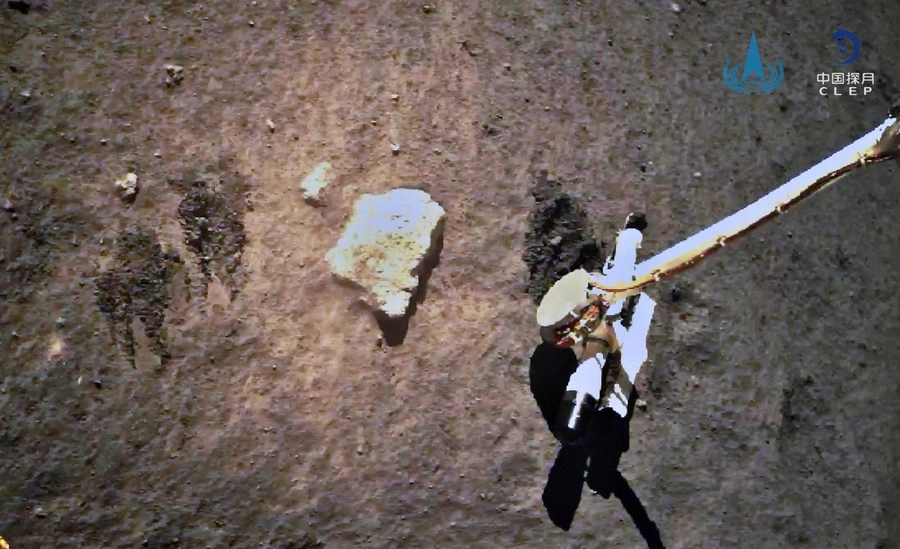 Photo provided by the China National Space Administration (CNSA) shows Chang’e-5 probe gathering samples on the moon on Dec. 2, 2020. (CNSA/Handout via Xinhua)
Photo provided by the China National Space Administration (CNSA) shows Chang’e-5 probe gathering samples on the moon on Dec. 2, 2020. (CNSA/Handout via Xinhua)
The U.S. likely submitted yet another request for lunar soil samples due to recent findings by Chinese scientists who discovered water within a new sample.
In June, China’s Chang’e 6 spacecraft successfully landed on the far side of the moon, marking the first time humans have collected samples from this region, returning with approximately 2 kilograms of specimens. An August research report stated that China has found a new method to utilize lunar soil for large-scale water production, and Prof. Wang Junqiang, mentioned earlier, was one of the project’s participants.
According to Chinese official media, by studying Chang’e 6’s lunar soil samples, researchers at the Chinese Academy of Sciences found that Lunar soil has stored large amounts of hydrogen due to billions of years of radiation from solar wind. When heated, the hydrogen reacts chemically with the iron oxides in the minerals, producing elemental iron and significant quantities of water. When the temperature rises above 1,000 degrees Celsius, the lunar soil melts, and the water generated from this reaction can be released as water vapour. One ton of lunar soil can produce approximately 51 to 76 kilograms of water, which is equivalent to over 100 bottles of 500-millilitre bottled water, this is basically enough for 50 people for one day.
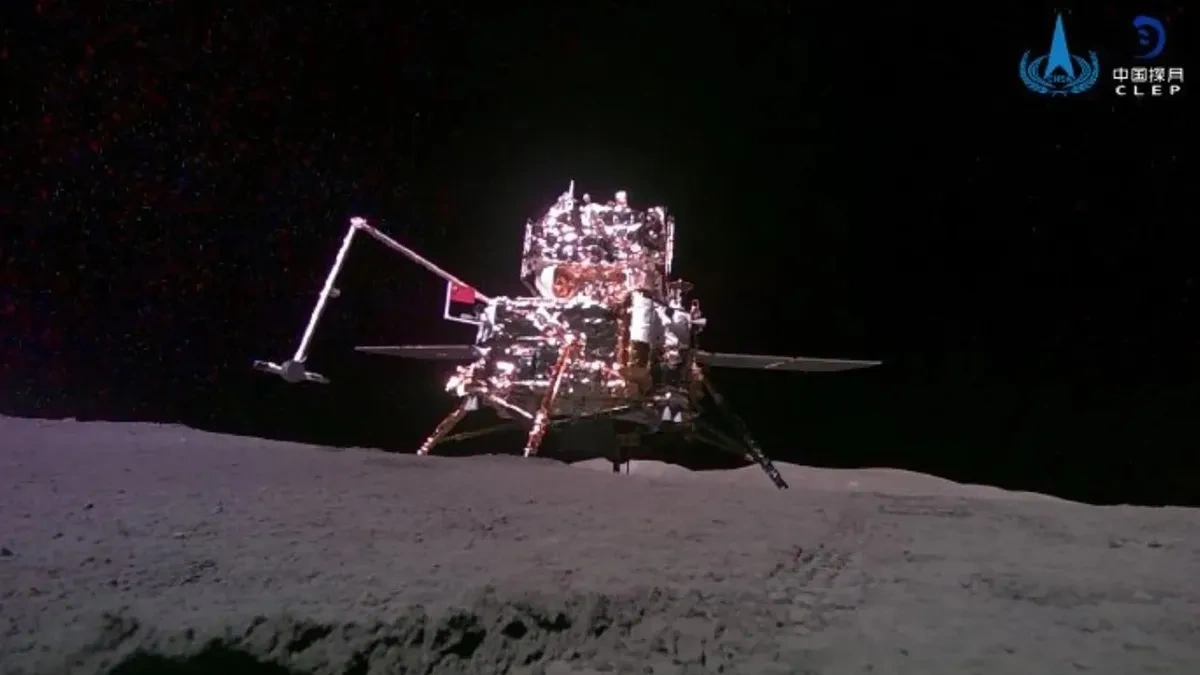 The Chang’e-6 lander captured this selfie with a small rover, collected moon soil from the far side, and loaded them into an ascent vehicle, which then launched into orbit for a return to Earth.
The Chang’e-6 lander captured this selfie with a small rover, collected moon soil from the far side, and loaded them into an ascent vehicle, which then launched into orbit for a return to Earth.
In response to the discovery made by Chinese scientists, NASA Administrator Bill Nelson was quoted by Reuters stating that the water found on the moon could be utilized to produce hydrogen rocket fuel for further exploration of Mars and other destinations.
The moon’s gravity is only one-sixth that of Earth’s, meaning that the same type of rockets launched from the moon could carry six times more payload than those launched from Earth. Major discoveries on the far side of the moon have undeniably given China a significant advantage in the space race. Interestingly, American scientists are limited in their access to this unique sample due to a U.S. law known as the Wolf Amendment.
Enacted by the U.S. Congress in 2011, the Wolf Amendment prohibits NASA from using government funds for direct bilateral cooperation with the Chinese government or affiliated organizations. At the time, the U.S. cited “concerns about the nature and goals of China’s space program” as the rationale for this legislation. However, for Chinese researchers, the Wolf Amendment is seen as a betrayal.
On the same day the amendment was issued, the U.S. space shuttle Endeavour completed its final mission, and NASA cancelled press passes that had been promised to all Chinese journalists. Ironically, according to Forbes, Chinese scientists played a key role in building essential components of Endeavour’s $2 billion payload, the Alpha Magnetic Spectrometer.
It is a space-based detector designed to study the universe and its origin. It is also the unique magnetic spectrometer on the Space Station and will operate on the ISS for its lifetime of. 13 universities and research institutes from China contributed their wisdom and funds to this project. However, when NASA thanked them on its official website, it marked China and its Taiwan province separately. These Chinese researchers may never have thought that the fruits of their intellectual labour would eventually become propaganda materials used by the United States to divide their motherland.
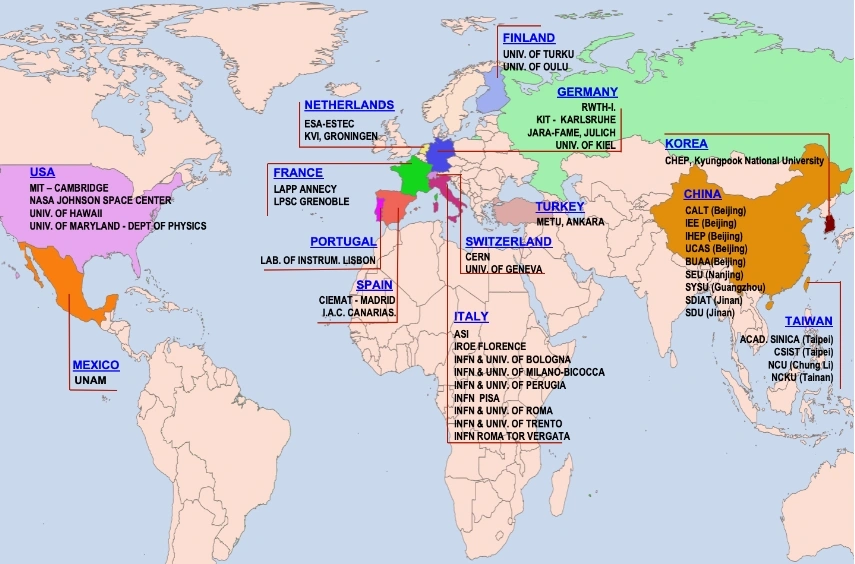 Map displayed via the About AMS-02 page on the official NASA website, linked to the AMS Collaboration.
Map displayed via the About AMS-02 page on the official NASA website, linked to the AMS Collaboration.
This kind of racial discrimination, which both want to exploit the intellectual resources of the Chinese researchers and attack China, has deeply hurt the Chinese people. Now, it’s China’s turn to reject the application from the United States.
In addition, in the paper on the Alpha Magnetic Spectrometer (AMS) published by all the researchers, Petr Levchenko, a Russian scientist with a permanent address at the Petersburg Nuclear Physics Institute, is included. However, on NASA’s official website, the contributions of all Russian researchers have been omitted, and no Russian universities or research institutions are marked on the map in the acknowledgments section. However, on the website operated by the European Space Agency, you can still find the origin version, and the markings of Russian research institutions on the acknowledgments map.
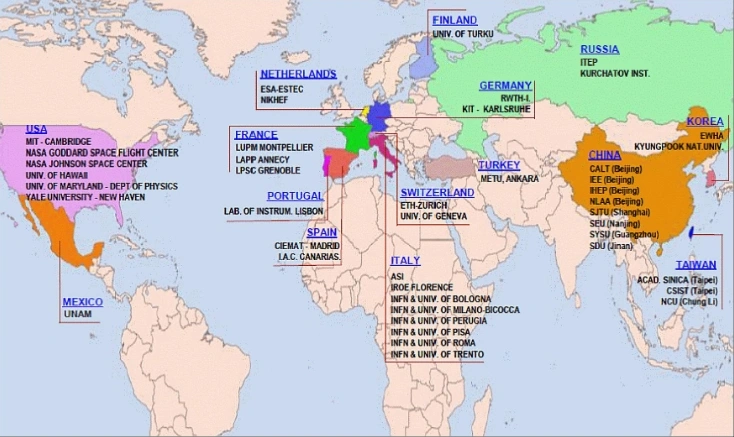 Map of the AMS Collaboration displayed via eoPortal (operated by the European Space Agency)
Map of the AMS Collaboration displayed via eoPortal (operated by the European Space Agency)
China isn’t looking to take on the responsibility of leading humanity to become an interstellar civilization by itself. As of now, more than 110 research teams from around the world have been approved to receive over 80 grams of lunar soil, excluding, of course, those from the United States. In June, Russia officially joined China’s International Lunar Research Station project, which also includes participation from eleven other countries Egypt, South Africa, Pakistan, Serbia, and Venezuela. Chinese scientists have successfully tested technology for making bricks from lunar soil and plan to use traditional Chinese mortise and tenon joints in the base’s construction. The lunar base is expected to be up and running by 2036.
If NASA can convince Congress to repeal the Wolf Amendment by December 2035, they might just make it in time for the lunar base’s opening ceremony, if they still remember how to get American astronauts to the moon by then.
Editor: Charriot Zhai
https://spacenews.com/nasa-researchers-get-permission-to-apply-for-chinas-moon-samples/
https://news.cctv.com/2024/08/22/ARTIDfu2QC7JgZB43Vd1acwz240822.shtml
https://www.guancha.cn/internation/2024_11_02_753952.shtml
https://www.reuters.com/science/chinese-scientists-use-lunar-soil-produce-water-state-media-reports-2024-08-22/
https://tass.com/science/1608525
https://rtvi.com/news/rossijskie-uchenye-nashli-neobychnye-kristally-v-lunnom-grunte-peredannom-kitaem/
https://www.forbes.com/sites/williampentland/2011/05/22/chinese-journalists-barred-from-shuttle-launch/
https://www.nasa.gov/alpha-magnetic-spectrometer/about-alpha-magnetic-spectrometer/
https://ams02.space/collaboration
https://www.eoportal.org/satellite-missions/iss-ams#iss-utilization-ams-02-alpha-magnetic-spectrometer
https://www.congress.gov/112/plaws/publ10/PLAW-112publ10.htm




Anonymous
Good article.